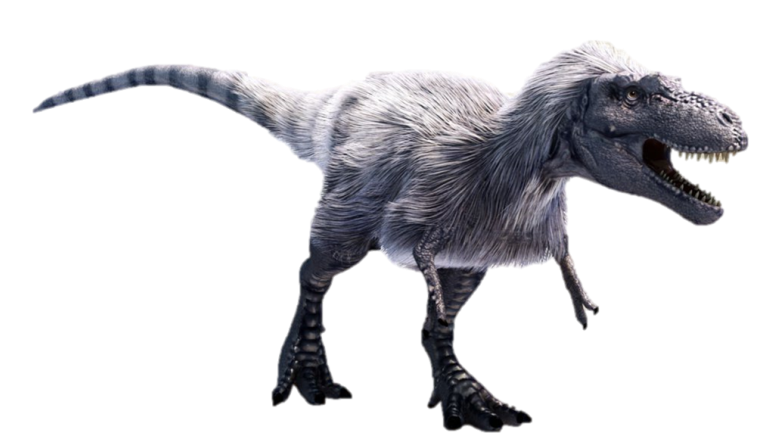Dino of the week: Albertosaurus
'Its biceps and triceps would need to do more than reliably open a jar of pickles'

Alberta's namesake dinosaur was a ferocious, flesh-eating monster, but the serrated-tooth species had an Achilles heel.
The Albertosaurus had puny arms.
The purpose of the small appendages remains a mystery to paleontologists.
In final instalmentof CBC Edmonton's summer-long series Backyard Dinosaurs each week it featured a different dinosaur found in Alberta University of Alberta paleontologist Scott Persons talked about this strange happenstance of anatomy.
Though smaller, Albertosaurus was almost identical to its much more famous younger cousin, the Tyrannosaurus rex, and both shared the strangely stunted extremities.
Like T.rex, Albertosaurus stood on two legs andhad a massive skull and jaws, but short arms, each withtwo claw-like fingers,.
"Albertosaurus resembled a smaller version of Tyrannosaurus rex," Persons said during an interview with CBC Edmonton's Radio Active.
"Keep in mind, smaller than T. rex can still mean pretty dang big. A full-grown Albertosaurus exceeded 30 feet in length."
The Albertosauruswas named in 1905 by Henry Fairfield Osborn, then director of the American Museum of Natural History in New York.
Its bones were first discovered in Alberta's Horseshoe Canyonin 1884, butthe creatures once roamed throughout much of North America.
"Dinosaurs didn't generally abide by provincial or international boundaries," Persons said.
Now, back to the question of the Albertosaurus and itsdiminutive arms, which have been a mystery since they were discovered.
Some paleontologists have speculated they may have been useful tohelp capture prey.
But Persons doesn't put much stock in such theories.
"To be useful to a tyrannosauridlike Albertosaurus, its biceps and triceps would need to do more than reliably open a jar of pickles or win the Mr. Universe contest," Persons said.
"Its arms would have to grapple with struggling prey animals the size of bulldozers and with just as much horsepower. That's a tall order,and I don't think the arms of Albertosaurus were up to the challenge."
Bone-shattering teeth
Instead, Persons thinks the evolutionary answer can be found in the massive saw-toothed fangs of the Albertosaurus.
Their hulking jaws and fangs became so big and powerful the dinosaurs had to compensate.
"Bone-shattering teeth could have dealt crippling wounds. However, they came with a cost," Persons said."Such teeth could only function properly with the aid of enormous jaw muscles, and with the evolution of enormous jaws muscles, and that would have made tyrannosaurids overly top-heavy."
Because they stood on their hind legs and held their spinal columns roughly horizontally, carnivorous dinosaurs were built like see-saws.
Even the former governor of California, could never have won an arm-wrestling competition with anAlbertosaurus- Scott Persons
"So, unless tyrannosaurids lost weight from somewhere else on their front end or grew ridiculously long tails, their see-saw bodies would have been out of balance and tyrannosaurids would have fallen flat on their faces."
Yet even if their arms were small, they were still Herculean by human standards.
"The arm of an Albertosaurus was about the same length as yours or mine," Persons said."But the various bones within the arms were much thicker, and the attachment sites for the arm muscles were much larger and more prominent. So, tyrannosaurid arms would have been a lot stronger.
"You or I, or even the former governor of California, could never have won an arm-wrestling competition with an Albertosaurus."












_(720p).jpg)


 OFFICIAL HD MUSIC VIDEO.jpg)
.jpg)



























































































